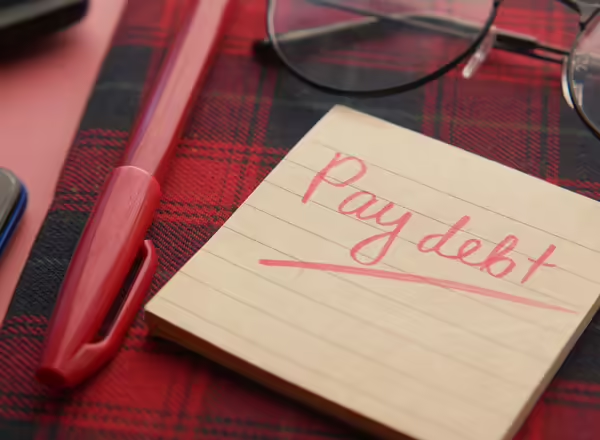
Buy Now, Pay Later (BNPL) plans divide your total purchase into equal payments, with only the first payment due at checkout. Often the total cost is divided into four equal payments; you only pay 25% of the total cost the day you make the purchase. The remaining payments are billed to your debit, credit card, or bank account.
For example, let’s imagine you see a winter coat on sale, and you want to purchase it now so that you’ll have it when the weather turns cold. If the coat costs $100, then you’ll pay only $25 immediately, at checkout. The next three $25 installments will be billed to your account. If your installment payments are every two weeks, you will pay for the coat in six weeks. This could be a very convenient way to spread the cost over two or more paychecks.
Depending on the Buy Now, Pay Later company’s plan, the installment payments might be due every two weeks, once a month, or even longer apart for larger purchases.
What are the pros and cons of using Buy Now, Pay Later plans?
Use of BNPL plans is common – have you used one? The top two reasons people report using BNPL plans is they 1) want to spread out payments and 2) like the convenience. Pros and cons to consider are in the Table below.
| Pros | Cons |
|---|---|
| Spreads out payments | Adds debt payments to your future |
| Convenient | Easier to overspend |
| May not require a good credit history | Payments may not be reported to credit bureaus |
| May be interest free | May include interest costs (up to 36% APR reported) |
| Commonly available | Late payments may cause fees (up to 25% of purchase price reported) |
| Does not require a credit card | Fees for use or reactivation may occur |
| Allows you to purchase now, and pay later | Late payments may be reported to your credit report |
| May be difficult to stop payments if you return an item |
Looking at the current BNPL plans advertised online, it seems that payments that extend for a longer period of time are more likely to charge interest. Some of the businesses make it easy to choose monthly financing (with interest charges) by partnering with a bank. I wonder if becoming familiar with a company through BNPL will lead to people having new credit cards?
How do you start using Buy Now, Pay Later plans?
Companies offering BNPL have phone apps which you can use with a virtual card. You may also have the choice when you checkout either online or in-store.
Applying for a BNPL may trigger a soft credit check with a credit bureau. Soft credit checks do not affect your credit score. However, if you apply for a different kind of financing (like a credit card with a partner bank), a hard credit check is likely. Hard credit checks show up as an inquiry on your credit report; too many inquiries can negatively change your credit score.
Be sure to read the rules for fees and interest costs before signing up for a BNPL plan. Each company I investigated varied!
A Buy Now, Pay Later plan is not automatically good or bad.
A Consumer Financial Protection Bureau report, March 2023, found that “a majority of BNPL borrowers would face credit card interest rates between 19 and 23 percent annually if they had chosen to make their purchase using a credit card.” These borrowers would add debt to a revolving credit card balance and the interest charges would be incurred right away. In this situation using BNPL plan makes sense, assuming the purchase needs to be made. Remember, even without interest charges, a BNPL purchase adds to a person’s debt load.
Let’s look at another example.
Jesse signed up for the BNPL at their local grocery store. Payments are deducted automatically from their checking account. The plan is a zero-interest, pay-in-four (or fewer) installment loan; payments are weekly.
Week 1: Jesse spends $100 on groceries and is divided into four equal payments ($25 each). Jesse pays $25 at the checkout register. The remaining $75 payment is postponed for the next three weeks.
For the rest of the month, Jesse uses the BNPL plan each week when they grocery shop. Each week they pay $25 at once; however, money from earlier grocery trips also is deducted from their checking account. See Table below.
Notice that by Week 4, $100 is deducted from their account -- $75 from previous weeks.
Buy Now, Pay Later plans can add up for people if used regularly, and decrease the amount of money available for current expenses.
|
|
Amount deducted from checking account
|
|||||||
|---|---|---|---|---|---|---|---|---|
|
Grocery Store Cost
|
Week 1 |
Week 2 |
Week 3 |
Week 4 |
Week 5 |
Week 6 |
Week 7 |
|
|
Week 1: $100
|
$25
|
$25
|
$25
|
$25
|
|
|
|
|
|
Week 2: $100
|
|
$25
|
$25
|
$25
|
$25
|
|
|
|
|
Week 3: $100
|
|
|
$25
|
$25
|
$25
|
$25
|
|
|
|
Week 4: $100
|
|
|
|
$25
|
$25
|
$25
|
$25
|
|
|
|
Total Amount from Checking Week 4: |
$100 |
|
|
|
|||
Consider the pros and cons for BNPL when making purchases. Also, comparison shop to find the best BNPL option for you, if you decide to use a BNPL plan.

Your credit report is a record of your credit history. Lenders and others use your credit report to learn how you have handled your obligations in the past. It helps them to determine the risk of lending money to you or doing business with you.
You have the right to see your credit reports regularly!
Learn more about how to check your credit report and ways to improve your credit history at Illinois Extension's webpage, Credit Reports and Scores.

Kathy Sweedler provides personal finance online education with Illinois Extension. Kathy’s emphasis is to encourage people to be confident in their financial decisions, and to help them explore new ways of thinking about and managing money. When Kathy is not engaged in Extension work, she is often traveling and piecing together family genealogy. Genealogy is a puzzle, not that different from managing money!
Sign up for Illinois Extension’s Personal Finance E-Newsletter sent quarterly to receive updates about blog posts and events.